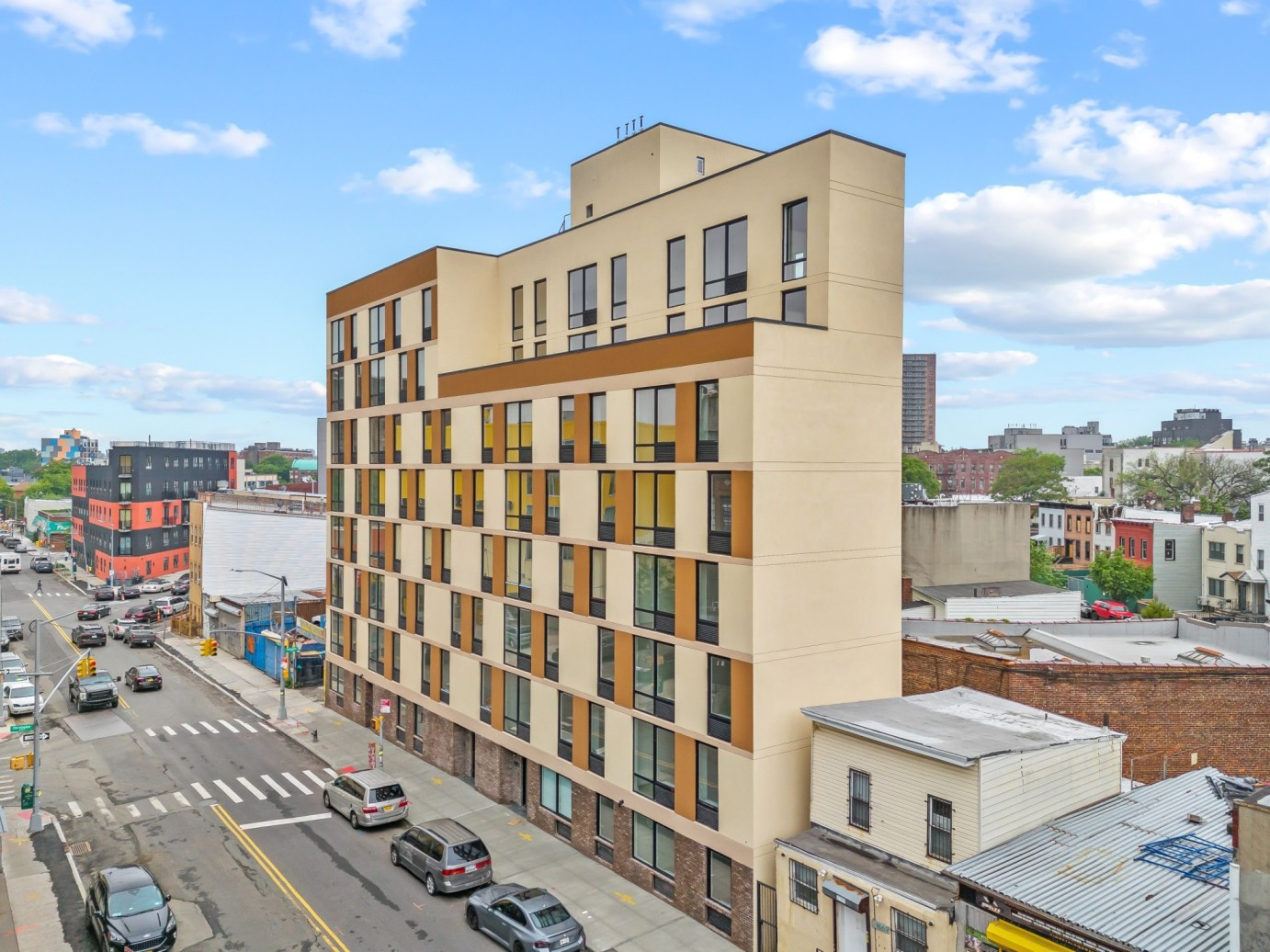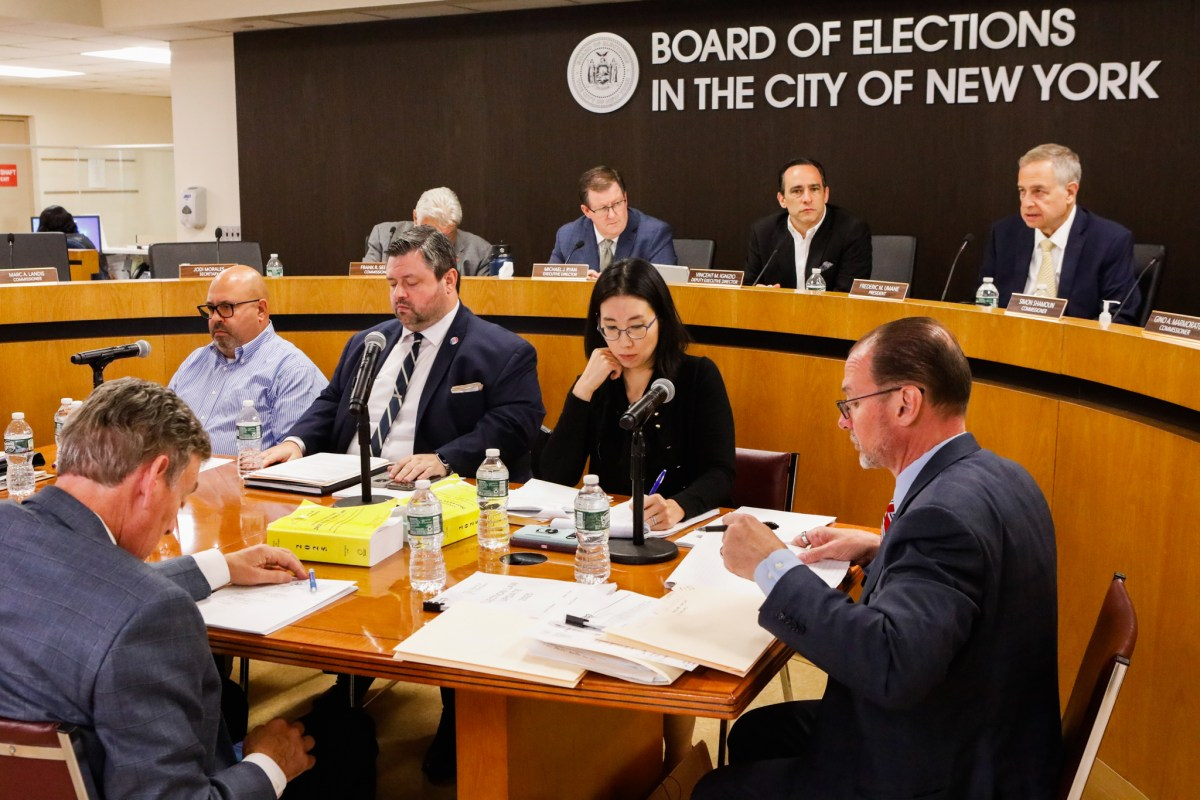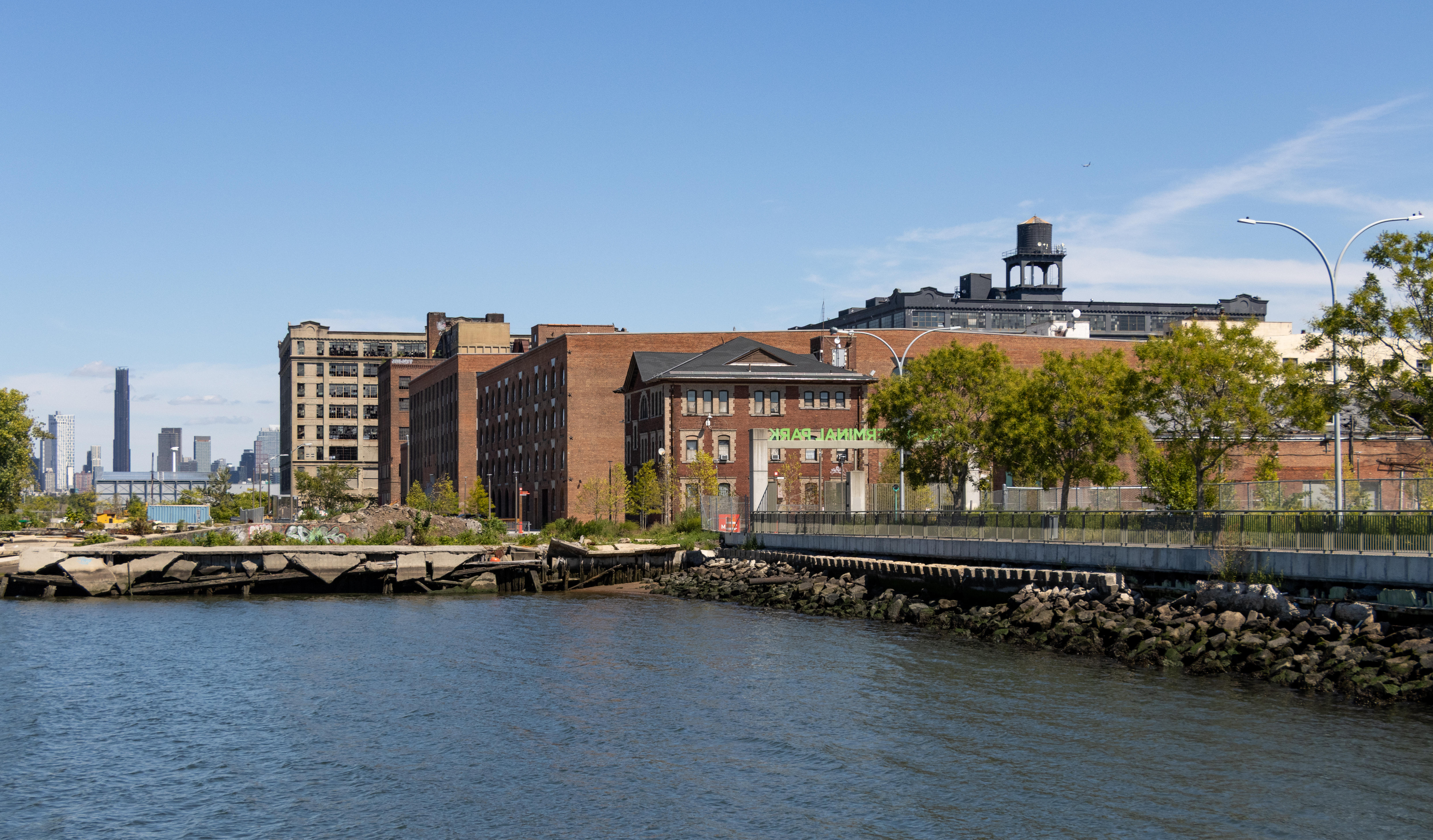NY Post: Blame the Garbage Bosses
Today in blizzard finger-pointing: “Selfish Sanitation Department bosses from the snow-slammed outer boroughs ordered their drivers to snarl the blizzard cleanup to protest budget cuts — a disastrous move that turned streets into a minefield for emergency-services vehicles, The Post has learned. Miles of roads stretching from as north as Whitestone, Queens, to the south…


Today in blizzard finger-pointing: “Selfish Sanitation Department bosses from the snow-slammed outer boroughs ordered their drivers to snarl the blizzard cleanup to protest budget cuts — a disastrous move that turned streets into a minefield for emergency-services vehicles, The Post has learned. Miles of roads stretching from as north as Whitestone, Queens, to the south shore of Staten Island still remained treacherously unplowed last night because of the shameless job action, several sources and a city lawmaker said, which was over a raft of demotions, attrition and budget cuts.” The subject line of the email from a reader yesterday morn that included this photo: “This is Fulton street?”
Sanitation Department’s Slow Snow Clean-Up Was a Budget Protest [NY Post]





heather,
The law states that those who go into any ER MUST be seen.
no doubt healthcare can be expanded from the current 87% to perhaps even 100% but the question is how to do it without bankrupting the nation.
the current Obama plan increases coverage to about 93% while putting us in Trillion dollar deficits for the forseeable future.
Not sustainable.
There must be another way.
Education is free in America as you know.
College is an option for anyone with the grades and the drive. CUNY is has a free honors program for example. SUNY is totally affordable as well. I worked through college and got scholarships and loans. I’m just about finished paying them back. It’s not about me though, it’s about a new accountability and an earnest national discourse about what we have and how we will pay for what we want.
Okay, not sure what you peeps are blathering about, but.
“This is primarily from the 2000 census:”
BUT LOL!!!!!! Using statistics from 10 years ago. ROFL!!!
Someone help me get up. Too funny.
“Overall, the typical American defined as poor by the government has a car, air conditioning, a refrigerator, a stove, a clothes washer and dryer, and a microwave. He has two color televisions, cable or satellite TV reception, a VCR or DVD player, and a stereo.”
The sad thing is, that all of those things are so inexpensive they would probably cost about $2,000, including one car payment.
Whereas, if that same poor person tried to send their kid to college, or buy health insurance…
“He is able to obtain medical care.”
Really? How?
“The average “poor” individual in the USA lives better than
the average “middle class” individual in Europe.”
I assume by that you mean they can afford a larger double-wide and lease a bigger car, but the fact that they can’t ever get sick or send their kids to college is a real bummer. There’s a ton of material crap, and then there is quality of life. Trust me, my husband’s poor elderly relatives in Northern Ireland have a much better quality of life than my own poor elderly relatives here. And that’s not because mine were irresponsible.
You have absolutely zero way of backing this up. Give me some data about “living better.”
lol,
stringer bell, you obviously don’t know me very well.
This is primarily from the 2000 census:
The following are facts about persons defined as “poor” by the Census Bureau, taken from various government reports:
Fortysix percent of all poor households actually own their own homes. The average home owned by persons classified as poor by the Census Bureau is a threebedroom house with oneandahalf baths, a garage, and a porch or patio.
Seventysix percent of poor households have air conditioning. By contrast, 30 years ago, only 36 percent of the entire U.S. population enjoyed air conditioning.
Only 6 percent of poor households are overcrowded. More than twothirds have more than two rooms per person.
The average poor American has more living space than the average individual living in Paris, London, Vienna, Athens, and other cities throughout Europe. (These comparisons are to the average citizens in foreign countries, not to those classified as poor.)
Nearly threequarters of poor households own a car; 30 percent own two or more cars.
Ninetyseven percent of poor households have a color television; over half own two or more color televisions.
Seventyeight percent have a VCR or DVD player; 62 percent have cable or satellite TV reception.
Seventythree percent own microwave ovens, more than half have a stereo, and a third have an automatic dishwasher.
As a group, America’s poor are far from being chronically undernourished. The average consumption of protein, vitamins, and minerals is virtually the same for poor and middleclass children and, in most cases, is well above recommended norms. Poor children actually consume more meat than do higherincome children and have average protein intakes 100 percent above recommended levels. Most poor children today are, in fact, supernourished and grow up to be, on average, one inch taller and 10 pounds heavier that the GIs who stormed the beaches of Normandy in World War II.
While the poor are generally wellnourished, some poor families do experience hunger, meaning a temporary discomfort due to food shortages. According to the U.S. Department of Agriculture (USDA), 13 percent of poor families and 2.6 percent of poor children experience hunger at some point during the year. In most cases, their hunger is shortterm. Eightynine percent of the poor report their families have “enough” food to eat, while only 2 percent say they “often” do not have enough to eat.
Overall, the typical American defined as poor by the government has a car, air conditioning, a refrigerator, a stove, a clothes washer and dryer, and a microwave. He has two color televisions, cable or satellite TV reception, a VCR or DVD player, and a stereo. He is able to obtain medical care. His home is in good repair and is not overcrowded. By his own report, his family is not hungry and he had sufficient funds in the past year to meet his family’s essential needs. While this individual’s life is not opulent, it is equally far from the popular images of dire poverty conveyed by the press, liberal activists, and politicians.
Of course, the living conditions of the average poor American should not be taken as representing all the poor. There is actually a wide range in living conditions among the poor. For example, over a quarter of poor households have cell phones and telephone answering machines, but, at the other extreme, approximately onetenth have no phone at all.
2011 is going to be some interesting ride here in New York,
the new governor is facing another 10 billion dollar deficit with last year’s deficit having been papered over with new taxes and irresponsible borrowing from dedicated funds.
The public employee sector will have to face the fact that the state cannot afford to pay at a rate disproportionate to the private sector.
One major fight will be to swing the state worker’s unions into the defined contribution pension plans from the defined benefit plans.
The private sector cannot afford to be in business simply to supply tax revenue to pay for massive public sector unfunded liabilities.
“We need to hit the reset button for sure, but that doesn’t mean blowing up the capitalist system that has kept the economic engine running for 200 plus years.”
This is the myth of the Right. No one wants to “blow up” the capitalist system. When all else fails, cry Commie!
“The average “poor” individual in the USA lives better than
the average “middle class” individual in Europe.”
You have absolutely zero way of backing this up. Give me some data about “living better.”
With some trepidation I’ll weigh in. Trepidation because I find myself uncomfortably perched on a fence of sorts when it comes to this one.
On the one hand, I am squarely behind the idea of worker’s unions and the rights of worker’s to fairly negotiate hours, wages and conditions and to have at least a modicum of power when up against corporate/management power and unbridled financial interests (I LOVE Heather’s comments above, btw, and found that her point about outsourced workers — including children — in Southeast Asia working the very hours and under the same awful conditions scoffed at by DIBS et al, got a rather unseemly and wholly inadequate response to a very good point)
On the other hand, however, I think some of the most powerful unions have some SERIOUS issues to work out within their ranks, and I totally understand the anger being directed at them that isn’t necessarily right-wing bullsh*t — thought there is plenty of that to be sure. I find it entirely possible if not PROBABLE that there was an underhanded, vengeful and shitty union response to this snowstorm and that enough workers responded to a grapevine-type call to shoddy or slow work to mangle the whole. It didn’t have to be some vast conspiracy involving all or even most — just ENOUGH workers to make the difference. Combine that with the cuts and that this was a genuinely super-duper storm, and you’ve got a measurably worse clean-up on your hands.